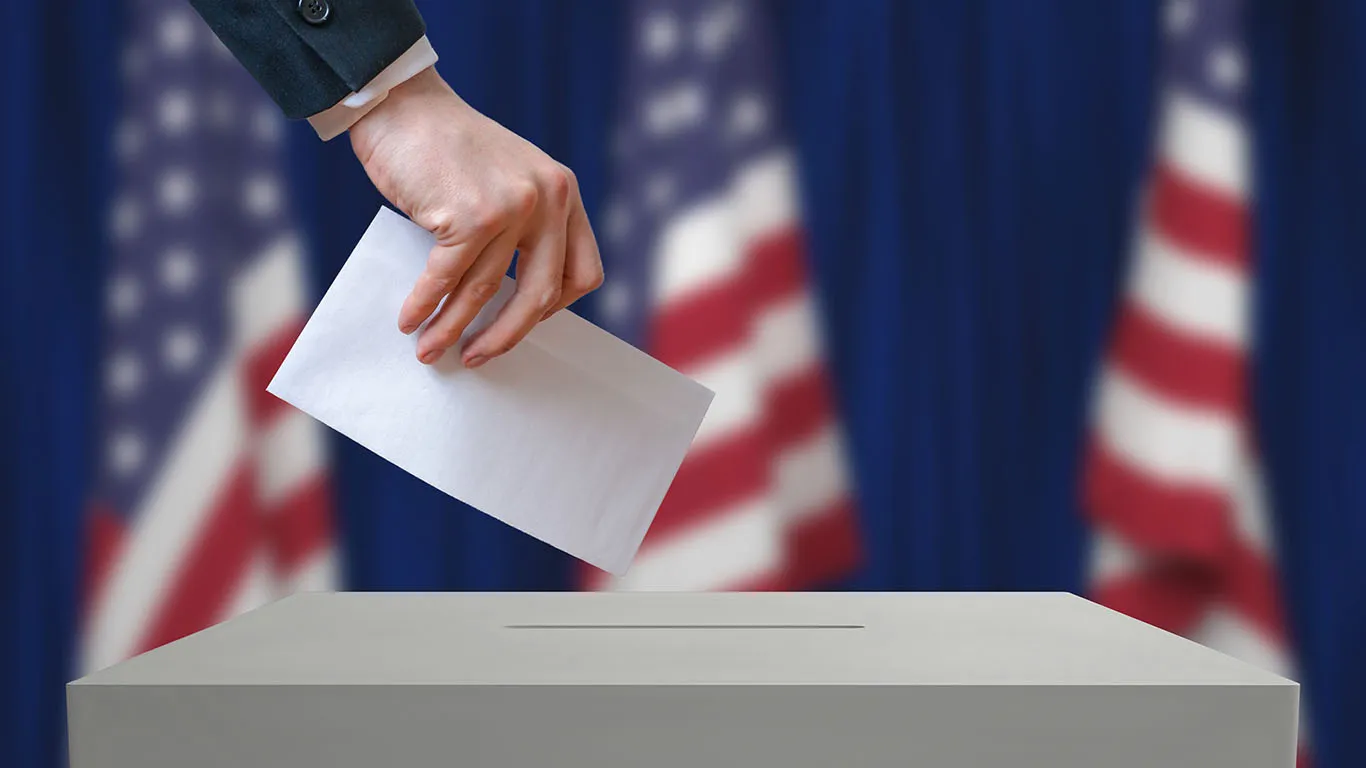Historical Trends in Voter Turnout
2000 Presidential Election
- Turnout: 54.2%
- Total Population: 282.2 million
- Voting-Age Population: 205.82 million
- Voting-Eligible Population: 194.33 million
- Total Votes Cast: 105.38 million
2004 Presidential Election
- Turnout: 60.09%
- Total Population: 292.8 million
- Voting-Age Population: 215.69 million
- Voting-Eligible Population: 203.48 million
- Total Votes Cast: 122.29 million
2008 Presidential Election
- Turnout: 61.55%
- Total Population: 304.1 million
- Voting-Age Population: 225.5 million
- Voting-Eligible Population: 213.31 million
- Total Votes Cast: 131.3 million
2012 Presidential Election
- Turnout: 58.01%
- Total Population: 313.19 million
- Voting-Age Population: 235.25 million
- Voting-Eligible Population: 222.47 million
- Total Votes Cast: 129.07 million
2016 Presidential Election
- Turnout: 59.21%
- Total Population: 324.31 million
- Voting-Age Population: 250.06 million
- Voting-Eligible Population: 230.93 million
- Total Votes Cast: 136.75 million
2020 Presidential Election
- Turnout: 66.19%
- Total Population: 331 million
- Voting-Age Population: 257.61 million
- Voting-Eligible Population: 239.25 million
- Total Votes Cast: 158.38 million
Comparative Analysis of Voter Turnout
Turnout rates from 2000 to 2020 show a general upward trend, with significant spikes in 2008 and 2020. Several factors influence these trends:
- Socioeconomic Factors: Higher income and education levels correlate with an increased likelihood of voting.
- Demographic Factors: Older individuals vote at higher rates than younger ones; racial and ethnic minorities often face barriers that suppress turnout.
- Political Factors: Party affiliation and political ideology play crucial roles in voter participation.
- Geographic Factors: Urban areas generally have higher participation due to better access to polling places and mobilization efforts.
Voter Turnout by Demographic Groups
- Age: Younger voters have historically lower turnout rates compared to older generations, with noticeable increases in 2008 and 2020.
- Race and Ethnicity: White voters consistently have higher turnout rates compared to Black, Hispanic, and Asian voters, with occasional boosts in minority participation seen in 2008 and 2020.
- Gender: Women generally vote at slightly higher rates than men, a trend that has remained stable.
Voter Engagement Initiatives
Voter registration drives and Get-Out-The-Vote ( GOTV) campaigns, employing strategies like door-to-door canvassing, phone banking, and digital outreach, target underrepresented groups and simplify the registration process.
Role of Technology and Social Media
Platforms like Facebook, Twitter, and Instagram are used to disseminate information, mobilize supporters, and encourage voter participation.
Impact of Electoral Events and Campaign Dynamics
Charismatic and polarizing candidates, as well as major events such as economic crises, social movements, and pandemics, can drive voter turnout by highlighting the stakes of the election.
Analysis of Voter Turnout in Battleground States
Turnout is generally higher in battleground states due to intense campaign efforts and the perception that votes are more consequential.
International Comparisons
US voter turnout rates are relatively low compared to other democracies. Countries with proportional representation systems and mandatory voting often exhibit higher participation rates. Learning from international practices, such as easing registration processes and expanding early voting, can help boost US voter turnout.
Conclusion
Analyzing voter turnout in US presidential elections from 2000 to 2020 reveals trends and factors influencing democratic participation. Efforts to boost turnout, including voter registration drives, GOTV campaigns, and the use of technology and social media, have proven effective. By understanding these dynamics and learning from international practices, strategies can be developed to further enhance voter turnout and strengthen the democratic process.
To stay informed and engaged, follow Janta for more insights into US elections and the political landscape. Additionally, participate in our poll for the upcoming 2024 presidential elections here.
Your voice matters!
